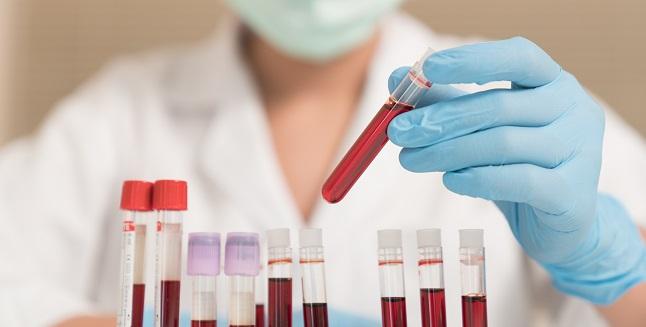CHARIOT: 1 in 20 Hospitalized Patients Undergoing Blood Tests Have Elevated Troponin
The findings suggest that the upper limit of normal is probably too low to be of use in noncardiac settings, researchers say.

The upper limit of normal for high-sensitivity cardiac troponin (hs-cTn) testing may not be a good indicator of who is having an acute MI in the absence of symptoms or history. In a British study of over 20,000 consecutive hospitalized patients, 1 in 20 had an elevated troponin level when researchers added the assay to routine bloodwork.
“In all but a small proportion, there was no suspicion of a heart attack or even something wrong with their heart,” senior author Nick Curzen, BM(Hons), PhD (University Hospital Southampton NHS Trust, England), said in an interview with TCTMD.
In the new study, published online March 13, 2019, in the BMJ, the mean upper limit of normal for the hs-cTn assay (Access AccuTnI+3; Beckman Coulter) in the hospitalized population was 296 ng/L. According to the manufacturer, the recommended 99th centile—or upper limit of normal—is 40 ng/L. The study authors say the cutoff for troponin was originally determined by measuring levels in healthy men and women ages 18 to 40.
To TCTMD, Curzen said while the manufacturers have done nothing wrong in setting the cutoff, the high level of sensitivity for troponin makes it clear that the test is best for ruling out MI, not ruling it in. The results, he added, should always be interpreted carefully and individually, especially if the assay is being used outside the acute cardiac setting.
In addition to raising the question of whether the recommended upper limit of normal is appropriate for a hospital population, Curzen said the fact that troponin is easily released into the bloodstream due to a number of illnesses makes it likely than many individuals may have elevated troponin tests either in a hospital or outpatient setting that could lead to inappropriate treatment such as antiplatelets, angiography, and consideration for revascularization. “Only type 1 MI benefits from the type of treatment that the patient may be committed to because their troponin is elevated,” he noted, adding that the findings suggest the need to restrict use of the assay even as many hospitals in the United States are just now transitioning from older troponin assays to high-sensitivity testing.
Next Steps in Understanding Elevated Troponin
For the study, known as CHARIOT, Curzen and colleagues, led by Mark Mariathas, MBBS (University Hospital Southampton NHS Foundation Trust), received approval to include the high-sensitivity troponin assay to the bloodwork, although neither the patients nor their physicians knew it was being performed. Only a small number of patients (n = 1,707) had the troponin test already included in their bloodwork order. Of these, chest pain was the most common reason for ordering it (73%).
The upper limit of normal varied depending on outpatient and inpatient status and by the department to which they were admitted when the test was performed. Patients in the emergency department, for example, had a mean value of 215 ng/L, with 6.07% above the cutoff. Additionally, approximately 40% of all critical care patients had troponin levels above the upper limit of normal.
On multivariable analysis, advancing age, male sex, and decreasing estimated glomerular filtration rate were independent predictors of troponin results above the upper limit of normal.
Among the other questions that Curzen and colleagues say the study raises are whether the levels in patients for whom the suspicion of acute MI is low really are abnormal, and whether they indicate myocardial injury or predict risk of adverse outcomes. To TCTMD, Curzen said the next step in the research is to follow the patients in CHARIOT for 1-year mortality outcomes to see if those with elevated hs-cTn are more likely to die and if higher levels correlate to higher risk. Also important, he added, is more discussion around how, when, and in whom to use troponin testing beyond early rule-out of MI.
Curzen said an important thing to consider is whether it is possible that having an elevated troponin “never means nothing.” Maybe, he added, hospitalized patients “shouldn’t have any troponin at all in their blood after all and it means that their heart isn’t going to do well in the long term. We just don’t know.”
In an email, James Januzzi Jr, MD (Massachusetts General Hospital, Boston), said it is well known that the 99th percentile for a normal population is well below what more acute/sick patients tend to have.
“What matters is to keep remembering that while myocardial injury—manifesting as an abnormal hs-cTn—is central to the diagnosis of MI, it does not define it . . . . MI is a clinical diagnosis, requiring clinical variables included in the Universal Definition to support its presence.”
L.A. McKeown is a Senior Medical Journalist for TCTMD, the Section Editor of CV Team Forum, and Senior Medical…
Read Full BioSources
Mariathas M, Allan R , Ramamoorthy S, et al. True 99th centile of high sensitivity cardiac troponin for hospital patients: prospective, observational cohort study. BMJ. 2019;364:l729
Disclosures
- The study was funded by an unrestricted grant from Beckman Coulter.
- Mariathas reports no relevant conflicts of interest.
- Curzen reports receiving unrestricted research grants from Boston Scientific, Haemonetics, HeartFlow, Beckman Coulter; speaking or consultancy fees from Haemonetics, Abbott Vascular, HeartFlow, and Boston Scientific; and travel sponsorship from Biosensors, Abbott, Lilly/D-S, St. Jude Medical, and Medtronic.


Comments